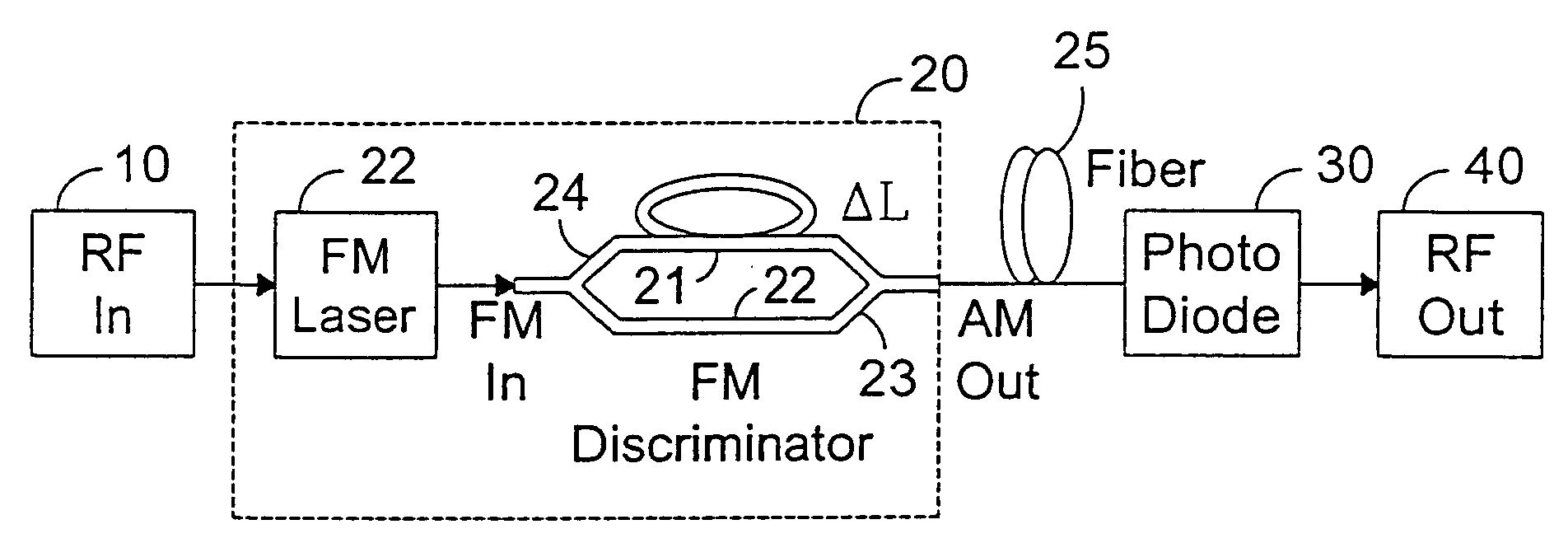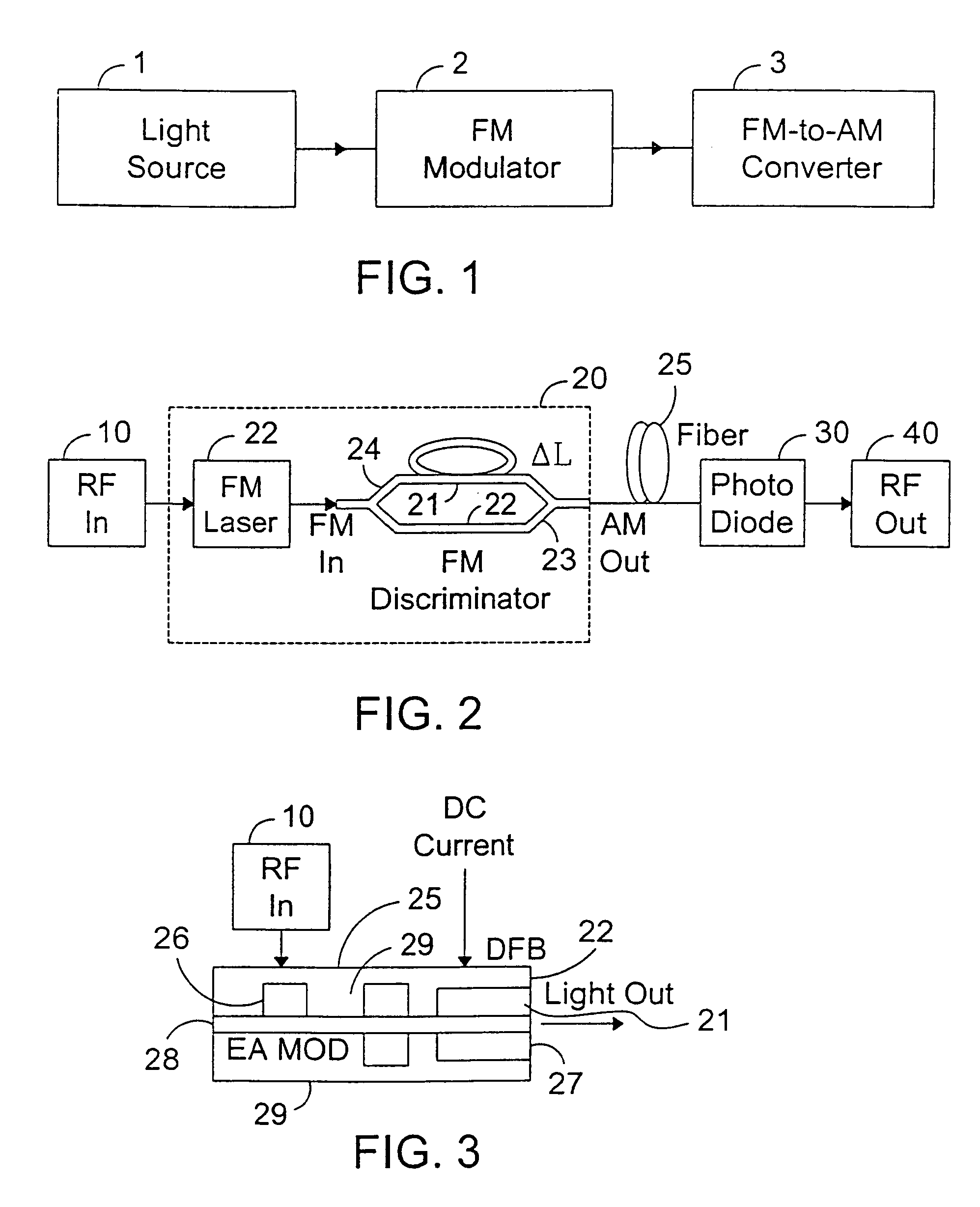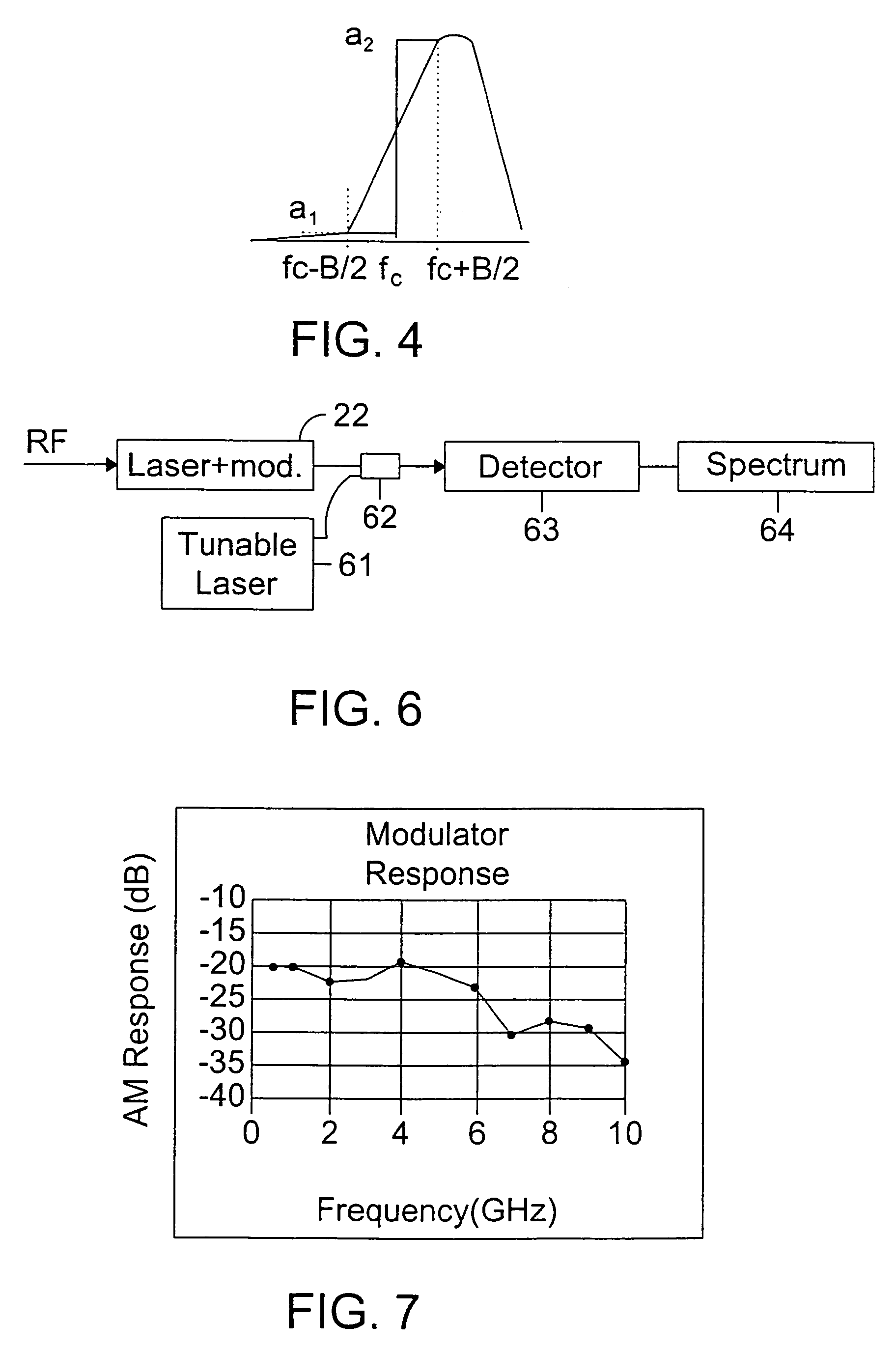System and method for generating analog transmission signals
a transmission signal and analog technology, applied in multiplex communication, semiconductor lasers, instruments, etc., can solve the problems of reducing the efficiency of rf signals, requiring smaller and lighter hardware than microwave counterparts, and significantly degrading performan
- Summary
- Abstract
- Description
- Claims
- Application Information
AI Technical Summary
Benefits of technology
Problems solved by technology
Method used
Image
Examples
Embodiment Construction
[0033]The present invention is, in one respect, a signal processor and method for generating modulated signals in an optical system. The present invention is, in another respect, a lightwave transmitter which may use the aforementioned signal processor for generating RF signals in a wireless communications system.
[0034]Referring to FIG. 1, a first embodiment of the signal processor of the present invention includes a light source 1, an FM modulator 2, and a linear FM-to-AM converter 3. The light source may be, for example, a semiconductor laser or a laser diode. The FM modulator modulates the frequency of a carrier signal with an input signal to produce an FM optical signal. Although the modulator is shown as being separate from the light source, those skilled in the art can appreciate that the modulator may be incorporated within the laser if desired. The linear FM-to-AM converter converts frequency variations in the optical signal output from the modulator into amplitude variation...
PUM
 Login to View More
Login to View More Abstract
Description
Claims
Application Information
 Login to View More
Login to View More - R&D
- Intellectual Property
- Life Sciences
- Materials
- Tech Scout
- Unparalleled Data Quality
- Higher Quality Content
- 60% Fewer Hallucinations
Browse by: Latest US Patents, China's latest patents, Technical Efficacy Thesaurus, Application Domain, Technology Topic, Popular Technical Reports.
© 2025 PatSnap. All rights reserved.Legal|Privacy policy|Modern Slavery Act Transparency Statement|Sitemap|About US| Contact US: help@patsnap.com



